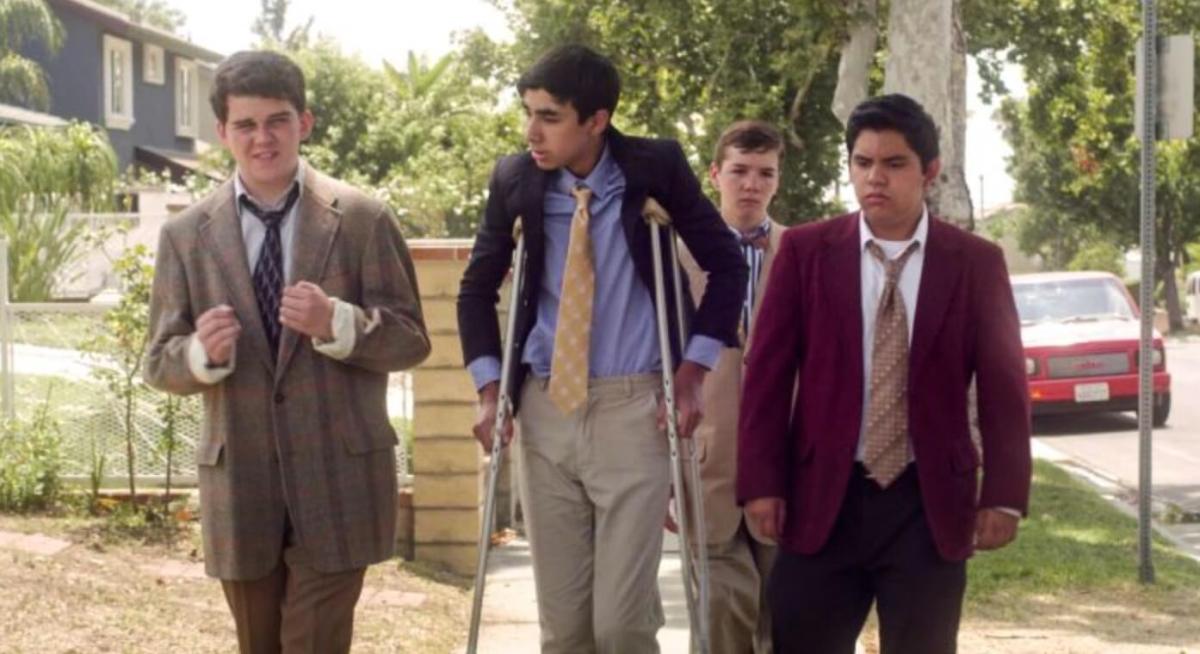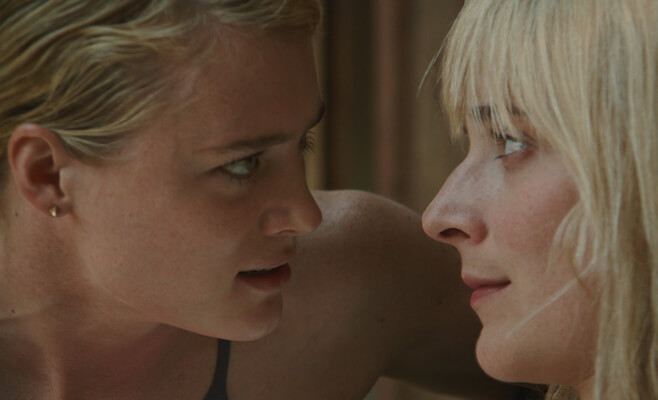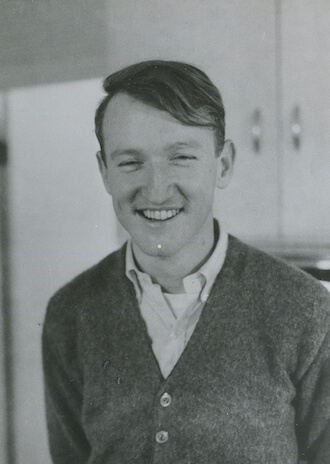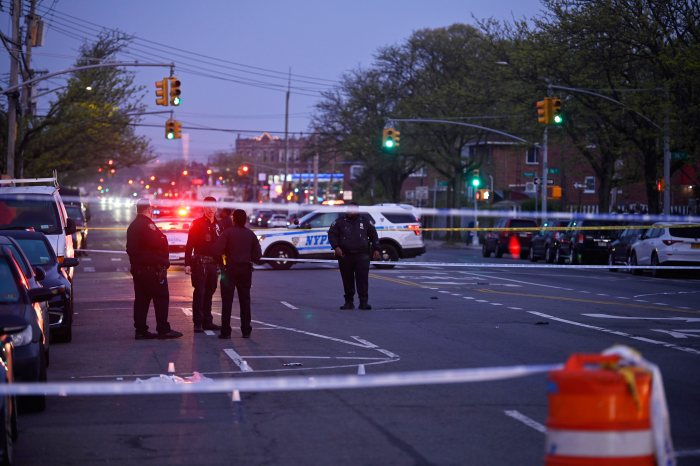In 2020, it might seem that all the possibilities of the coming-of-age drama have been exhausted, especially if they take place in American suburbia. Still, Tyler Taormina’s “Ham on Rye” manages to carve out new territory within it. If its main influence is Richard Linklater’s “Dazed and Confused,” “Ham on Rye” takes that film’s lack of a central character or narrative much further. It presents a story that doesn’t make literal sense, being much more interested in creating a space for characters and viewers alike to hang out.
The cast of “Ham on Rye” mixes a few minor celebrities with non-professional teen actors. None was told the entire concept of the film. They only received the scenes containing their lines. This helps explain the convincingly dazed performances some of them give. No one uses drugs onscreen in “Ham on Rye,” but it shares the spacious drift of the films Robert Altman made while he shared his weed stash with the cast.
The film follows a suburb full of teens, dressed up and excited in the daytime. (The boys are wearing old-fashioned suits.) They drive through their town, heading toward a diner called Monty’s. Throughout the day, “Ham on Rye” diverts its attention from person to person. The dialogue is funny, but it’s random: none of it builds up to a story or leads anywhere in particular. Then, the destination is revealed: a prom held at the diner. But the dancing leads them up to a glowing ball which erases the presence of most teens from the town.
The film continues for the rest of the night and the following day, depicting a far more desolate place. The angst caused by the absence of most of the town’s residents is expressed quietly but forcefully. “Ham on Rye” starts out teeming with life, but the final third is full of long shots with no one in the frame. The town continues, but its vitality has been sapped. A major sacrifice has been made.
Horror films like “It Follows” and “Raw” have come up with strange allegories for the end of adolescence, but “Ham on Rye” offers a bizarre premise with no guidance about how to read it. Did the Rapture take place? Is this a metaphor for poor youth left behind in dead-end towns when their peers leave for college? The isolation caused by people staying at home and looking at Netflix and social media rather than actually socializing? Any rite of passage that marks its participants as changed?
Carson Lund’s cinematography contributes enormously to the film’s unreal atmosphere. The early scenes look unnaturally bright (foreshadowing the bulb of doom) and soft. Light sources within the frame glow forcefully. The editing also adds to the off-kilter quality.
It’s impossible to settle on a single interpretation of “Ham on Rye,” but that proves to be its strength. Rather than arriving at a statement about what it’s like to be a teenager now, the film is more interested in showing us how it feels. All along, it’s a hangout movie. The final third feels much sadder because that hangout has been reduced to solitary, isolated people, rather than a communal dance or party around a fire. Its vision of suburbia combines the narrative of unexplained disappearance from Antonioni’s “L’avventura” with the eerie emptiness of the coda to his later “L’eclisse.” Premiering at a film festival in Locarno, Switzerland, in the summer of 2019, “Ham and Rye” was made long before images of abandoned city streets started circulating this past spring, but it offered a premonition of them. Jumpy even when most interested in people and bored with conventional storytelling, “Ham on Rye” succeeds splendidly as a mood piece.
HAM ON RYE | Directed by Tyler Taormina | Factory 25 | Starts streaming Oct. 23 | Anthology Film Archives; anthologyfilmarchives.org
To sign up for the Gay City News email newsletter, visit gaycitynews.com/newsletter.



































